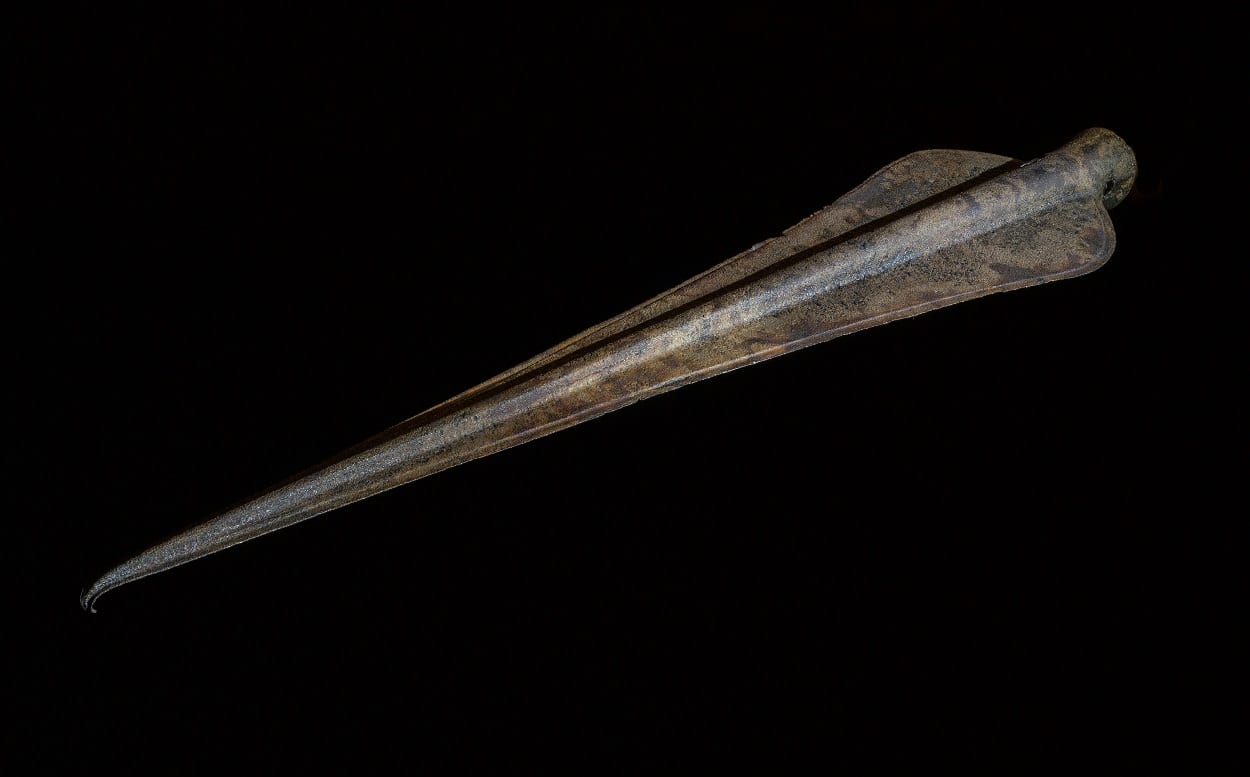A complete Bronze Age spearhead has been discovered by a metal detectorist on the island of Jersey.
The discovery was made by detectorist Jay Cornick on a beach next to the small village of Gorey on the island’s eastern coast. In line with best practice for non-treasure, Mr Cornick recorded the find-spot location and declared it to Jersey Heritage.
Carbon dating of the remains of a Field Maple wooden shaft attached to the spearhead, suggests the find dates from between 1207 BC and 1004 BC around the later Bronze Age.
Olga Finch, Jersey Heritage’s Curator of Archaeology, said: “The spearhead is a really exciting find for Jersey – it is unique and very rare in terms of its large size and the fact that it is intact.”
Researchers suggest that the spear head was deposited as part of a ritual offering, as most Bronze Age items discovered on Jersey are usually part of a hoard containing used and broken metal tools and weapons.
Jersey Heritage’s Museum Conservator Neil Mahrer said: “To see this spearhead in one piece was incredible and the wood inside the spear shaft was so well preserved that we were able to use it to discover that it dated back to over 3,000 years ago.”
The Bronze Age spearhead has been placed on display in a new finds case at Jersey Museum & Art Gallery.
Header Image Credit : Jersey Heritage





